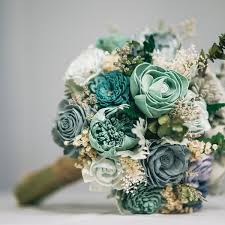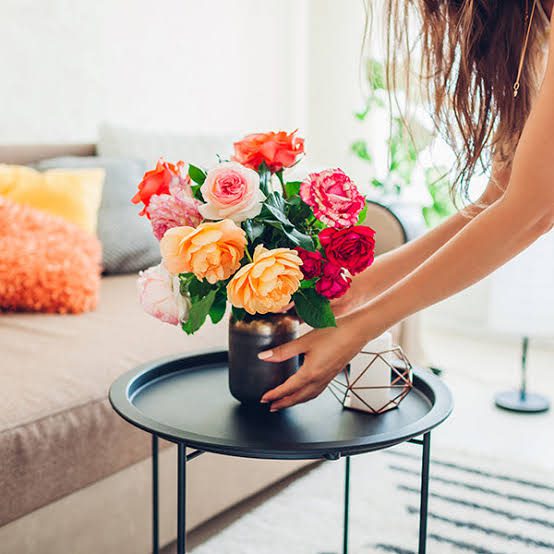Sola flowers, also known as “shola” flowers, derive their name from the sola plant (Aeschynomene Aspera) native to the Indian subcontinent and parts of Southeast Asia. The plant possesses a spongy, cork-like core that makes it incredibly buoyant, allowing it to float effortlessly on water. This unique characteristic caught the attention of gifted craftsmen who recognized the immense potential of the sola plant as a medium for crafting exquisite flowers.
The process of creating sola flowers is a labor of love, requiring a blend of traditional craftsmanship and contemporary creativity. It begins with the careful harvesting of the sola plant’s outer bark, which is then sliced into thin sheets. These delicate shavings are subsequently shaped into flower petals, either by hand or with the assistance of specialized tools, giving rise to stunning replicas of various floral species.
What makes sola flowers truly exceptional is their unparalleled versatility. Artisans can dye them in an extensive array of colors, ranging from soft pastels to vibrant hues, allowing for customization to match any aesthetic or occasion. Additionally, sola flowers can be intricately crafted into bouquets, floral arrangements, centerpieces, wreaths, and even wearable accessories like bridal crowns and boutonnieres. Their ability to adapt to various forms and styles makes them a cherished choice for weddings, home decor, and special events.
Beyond their aesthetic appeal, sola flowers also hold significant ecological advantages. Unlike fresh flowers, which wither and require continuous replacements, sola flowers retain their timeless charm indefinitely. This eco-friendly attribute not only reduces waste but also provides an enduring symbol of beauty and love that will last for generations to come.
Moreover, supporting the artisanal craftsmanship behind sola flowers fosters sustainable livelihoods for communities that rely on traditional methods of flower crafting. By choosing sola flowers, individuals contribute to the preservation of cultural heritage and empower skilled artisans to continue their cherished traditions.
In recent years, sola flowers have gained immense popularity, not just for their captivating appearance but also for the sentimental value they carry. Each sola flower possesses a unique charm, with no two blooms being exactly alike. This individuality resonates with the notion that beauty lies in diversity, just like the myriad of blossoms found in nature’s garden.
As we embrace the elegance of sola flowers, we are reminded of the impermanence of life and the fleeting beauty of the natural world. Their presence allows us to pause, cherish the moment, and reflect on the everlasting allure of nature’s creations.
In addition, sola flowers encapsulate the best of both worlds – nature’s breathtaking beauty and the artistry of skilled craftsmen. These delicate wonders serve as a poignant reminder of the splendor that surrounds us and the significance of preserving our environment and cultural heritage. Whether adorning a joyful celebration or gracing a tranquil corner of our homes, sola flowers symbolize a timeless elegance that will forever enchant and captivate those fortunate enough to encounter their exquisite allure.
Read Also: All You Need To Know About Small White Flowers
History And Significance of Sola Flowers

The history of sola flowers dates back centuries, and their significance has evolved over time, touching various cultures and traditions. These enchanting blooms have played diverse roles, from sacred offerings in religious ceremonies to symbolic representations of everlasting love. Let’s explore the fascinating journey of sola flowers and their enduring significance.
The origins of sola flowers can be traced to the Indian subcontinent and Southeast Asia, where the sola plant (Aeschynomene Aspera) thrives in marshy areas. It is believed that as early as the 9th century, artisans in these regions discovered the unique buoyant properties of the sola plant’s bark and began experimenting with it as a material for crafting artificial flowers.
In ancient cultures, flowers held deep spiritual significance.
Sola flowers, with their delicate beauty and eternal appearance, became a symbol of the divine and the impermanence of life. In Hindu and Buddhist traditions, flowers were and still are an integral part of rituals and offerings, symbolizing purity, devotion, and the cycle of life. Sola flowers, being everlasting, were particularly valued in these sacred practices.
As trade routes expanded, sola flowers made their way to Europe during the colonial era. The West soon discovered the appeal of these unique blooms, and they became popular as exotic decor elements. However, it was in the Victorian era that sola flowers saw a significant resurgence in popularity. Victorians, known for their love of ornate and sentimental decor, cherished sola flowers for their delicate craftsmanship and as mementos to remember loved ones.
Over time, the art of crafting sola flowers evolved and spread to different parts of the world. Skilled artisans refined their techniques, creating increasingly intricate and lifelike blooms. Sola flowers became a treasured craft, passed down through generations, and were used in various forms of decoration, from adorning hats and clothing to enhancing interior spaces.
In the modern era, the allure of sola flowers has only grown.
As eco-consciousness and sustainability gained prominence, people sought alternatives to fresh flowers that could be preserved and reused. Sola flowers emerged as a perfect solution, offering not just an eco-friendly choice but also an exquisite and customizable decor option for weddings, events, and home adornment.
Sola flowers have become especially popular in weddings and special events. Brides and grooms appreciate the versatility of sola flowers, as they can be customized to match any color scheme and styled to fit any theme.
Bouquets and arrangements made from sola flowers are cherished keepsakes, representing everlasting love and memories of the special day.
As the demand for sola flowers increased, the art of crafting them became a source of livelihood for artisans in various regions. Supporting the production of sola flowers empowers these skilled individuals and preserves traditional craftsmanship, fostering sustainable communities.
Beyond their aesthetic appeal, sola flowers symbolize the enduring beauty of nature and the fleeting nature of life. They remind us to appreciate the present moment and cherish the wonders of the natural world.
However, the history and significance of sola flowers are intertwined with culture, spirituality, and craftsmanship. From their ancient origins in Asia to their contemporary appeal as eco-friendly and customizable decorations, sola flowers continue to captivate and inspire people worldwide. These everlasting blooms serve as a timeless reminder of the enduring beauty found in both nature and human creativity.
Types of Sola flowers
Sola flowers come in various shapes, sizes, and styles, offering a wide range of options for different preferences and occasions. Skilled artisans can transform the sola plant’s bark into stunning replicas of various floral species. Below are some of the most popular types of sola flowers.
1. Roses: Sola roses are timeless and elegant. Crafted with intricate petals and available in a plethora of colors, they symbolize love and beauty, making them a favorite choice for weddings and romantic occasions.
2. Peonies: Known for their large, lush blooms, sola peonies exude grace and opulence. These flowers are popular in wedding decor and add a touch of sophistication to any arrangement.
3. Dahlias: Sola dahlias feature layered petals and intricate details, offering a captivating and dynamic appearance. They come in various sizes, from small and delicate to larger, statement-making blooms.
4. Sunflowers: Sola sunflowers capture the essence of sunshine and cheerfulness. With their bright yellow petals and distinctive centers, they add a joyful and vibrant touch to any setting.
Lilies: Sola lilies showcase the elegance and purity associated with this classic flower. They are often used in bridal bouquets and religious ceremonies due to their spiritual significance.
5. Tulips: Sola tulips represent new beginnings and springtime. Their graceful shape and variety of colors make them a popular choice for both home decor and events.
6. Orchids: Sola orchids embody grace and exotic beauty. These delicate flowers are favored for their unique and sophisticated appearance, adding an element of luxury to any arrangement.
7. Chrysanthemums: Sola chrysanthemums are known for their abundance of petals and come in various colors. They symbolize joy, longevity, and abundance, making them suitable for festive occasions.
8. Anemones: Sola anemones feature a striking contrast between their dark centers and delicate petals. They add a touch of drama and elegance to floral arrangements.
9. Hibiscus: Sola hibiscus flowers are reminiscent of tropical paradise. Their vibrant colors and exotic appeal make them popular for beach weddings and summer-themed events.
10. Daisies: Sola daisies bring a sense of simplicity and innocence to any setting. They are versatile and can be used in a wide range of floral creations.
11. Cherry Blossoms: Sola cherry blossoms capture the beauty of spring and are often associated with themes of renewal and transience.
These are just a few examples of the many types of sola flowers available. Additionally, skilled artisans can create custom designs and combine different sola flower types to craft unique and personalized floral arrangements for any occasion. The versatility and beauty of sola flowers continue to make them a cherished choice for various decorative purposes.
Read Also: Significance and Uses of Hanging Flowers
Uses of Sola flowers

Sola flowers have a wide range of uses, thanks to their versatility, beauty, and eco-friendly nature. Artisans and decorators have found creative ways to incorporate these exquisite blooms into various aspects of life. Here are some of the most common uses of sola flowers.
1. Weddings: Sola flowers have become increasingly popular in weddings. They are used to create bridal bouquets, boutonnieres, corsages, and floral crowns for the bride and groom. Sola flower arrangements can also adorn wedding venues, ceremony backdrops, aisle decor, and reception centerpieces, adding a touch of natural elegance to the special day.
2. Home Decor: Sola flowers make stunning home decor elements. Whether displayed in vases, wreaths, or wall hangings, they add a touch of beauty and charm to living spaces. Sola flower arrangements require little maintenance and can be enjoyed for years without wilting or losing their appeal.
3. Events and Parties: From birthdays to anniversaries and other special occasions, sola flowers are utilized in event decorations. They can be fashioned into stunning floral arrangements, table centerpieces, and event backdrops to create a warm and inviting atmosphere.
4. Bridal Showers and Baby Showers: Sola flowers are perfect for decorating bridal showers and baby showers. They can be used as table centerpieces, party favors, and even as part of games and activities.
5. Gifts and Keepsakes: Sola flower arrangements make thoughtful and sentimental gifts. Whether it’s a small sola flower bouquet or a single bloom, they can convey love, appreciation, and lasting memories.
6. Holiday Decorations: Sola flowers are incorporated into holiday decor, adding a touch of nature to festive settings. They are especially popular during Christmas, Easter, and Thanksgiving celebrations.
7. Business and Retail Displays: Sola flowers are utilized in commercial settings to create attractive displays in shops, boutiques, and restaurants. Their charm can enhance the ambiance and make the space more inviting to customers.
8. Hair Accessories and Fashion: Sola flowers can be fashioned into hair accessories like hairpins, clips, and headbands, adding a touch of floral elegance to hairstyles. They are also used as embellishments on clothing, hats, and other fashion accessories.
9. Photography Props: Sola flowers are favored by photographers as versatile and photogenic props. They add a natural and romantic touch to photoshoots, especially for engagement, maternity, and lifestyle sessions.
10. DIY Craft Projects: Sola flowers are popular among craft enthusiasts. They can be used in a wide variety of DIY projects, including scrapbooking, card making, home crafts, and more.
11. Memorial and Sympathy Gifts: Sola flowers hold sentimental value, making them a thoughtful choice for memorial and sympathy gifts. They can be crafted into remembrance wreaths and keepsakes to honor the memory of loved ones.
Overall, sola flowers offer endless possibilities for creative expression and add a touch of everlasting beauty to various aspects of life. Their charm, eco-friendliness, and adaptability have made them a cherished choice for a diverse range of uses, appealing to people seeking both natural elegance and sustainability.
